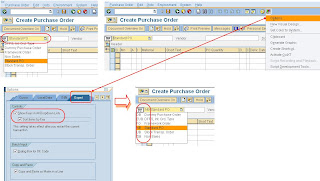The Materials Management application component supports materials management functions and processes in day-to-day business operations.
The MM (Materials Management) application component includes the following transactions and functions:
- Material requirements planning
- Material procurement
- Inventory management
- Invoice verification
- Material valuation
- External services management
MM can be logically integrated with other SAP application components including:
- Production planning and control
- Warehouse management
MM provides the basis for materials requirement planning (MRP) through its integration with the R/3 system purchasing and warehouse/inventory systems application subcomponents.
In purchasing or material procurement, comprehensive functionality is provided to optimize relevant work processes. This includes purchase requisition (PR) generation up to printing out purchase orders (PO).
In inventory management, transactions which trigger to changes in stock levels are as below:
- Goods receipts
- Stock transfers
- Reservations
- Stock adjustments
- Physical inventory
- Return deliveries
Goods receipts can be performed with reference to purchase orders (PO), production order or even without any reference for certain case. This process will update the stock information including the values (if valuated) according to automatic account determination that has been defined in configuration.










